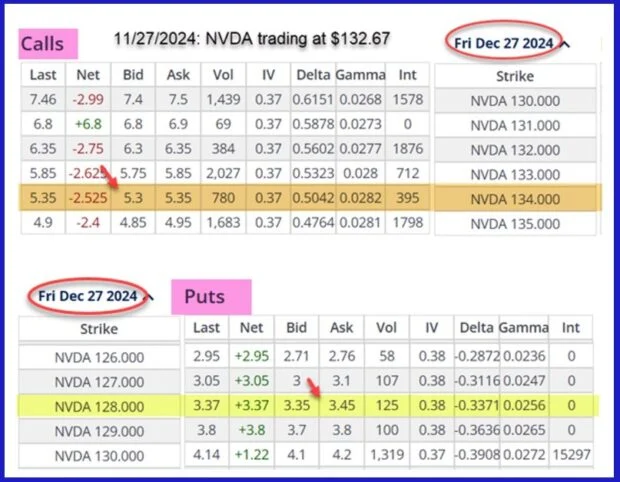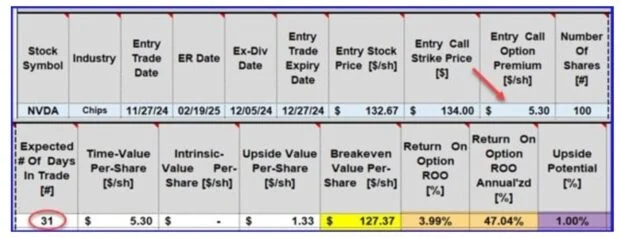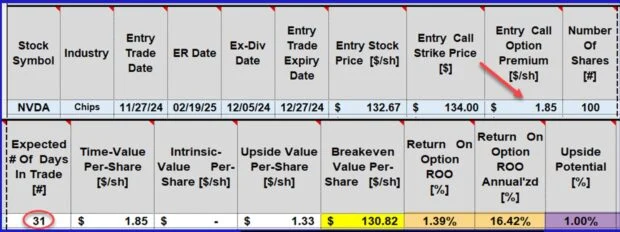Calculating Collar Trades Using the BCI Trade Management Calculator (TMC) – May 5, 2025
The Collar Strategy is a covered call writing-like strategy where a protective put is added to the trade, thereby establishing a floor and a ceiling with a maximum gain and a maximum loss. The 3 legs of a collar are an out-of-the-money (OTM) call, an OTM put and a long stock position. This article will use a real-life example with NVDIA Corp. (Nasdaq: NVDA) to demonstrate how to calculate the initial collar returns using the BCI TMC spreadsheet.
Main uses for adding a protective put to convert covered call trades to collar trades
- Protection in a contract period to protect during an earnings report
- Protection during bear & volatile market conditions
- Reducing risk during uncertain times (Brexit, Fed announcement, elections etc.)
- Protecting appreciated stocks
- Insurance when we can’t be near a computer to monitor portfolios
Real-life example with NVDA
- 11/17/2024: Buy 100 x NVDA at $132.67
- 11/17/2024: STO 1 x OTM 12/17/2024 $134.00 call at $5.30 (ceiling)
- 11/17/2024: BTO 1 OTM 12/17/2024 $128.00 put at $3.45 (floor)
NVDA option-chain on 11/27/2024 for the 12/27/2024 expiration

NVDA call returns only: Before protective put purchase

- The entire call premium is entered
- If taken through expiration, this is a 31-day trade (red circle)
- The breakeven price is $127.37 (yellow cell)
- The initial covered call return is 3.99%, 47.04% annualized (brown cells)
- An additional 1% can be realized if the share value moves up to or beyond the $134.00 strike (purple cell)
NVDA Collar Calculations Deducting the Put Debit from the Call Credit ($5.30 – $3.45)

- The net option premium is entered ($5.30 – $3.45 = $1.85)
- If taken through expiration, this is a 31-day trade (red circle)
- The initial covered call return is 1.3%, 16.42% annualized (brown cells)
- An additional 1% can be realized if share value moves up to or beyond the $134.00 strike (purple cell)
NVDA Collar Pros & Cons
- Advantages
–Protects against catastrophic share loss below the $128.00 protective put strike
–Still results in a net option credit with an insurance policy
–Upside potential remains the same (1%)
–Sleep better at night?
- Disadvantages
–Initial time-value return is reduced from 3.99%, 47.04% annualized to 1.39%, 16.42% annualized
Discussion
- The collar strategy adds a protective put to our covered call trades
- Protects us against overwhelming share price decline
- Time-value returns will be lower in exchange for the added protection
- Our collar trades can be managed by the BCI Trade Management Calculator (TMC)
- We do so, by deducting the put premium debit from the call premium credit
- We can establish both initial and final calculations using this spreadsheet
Author: Alan Ellman